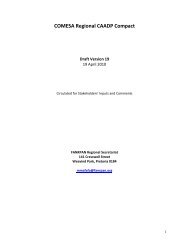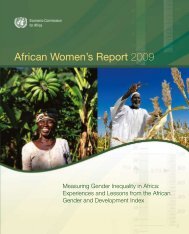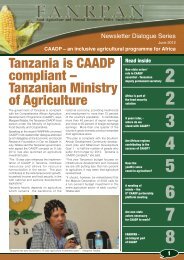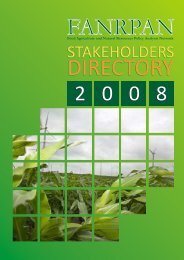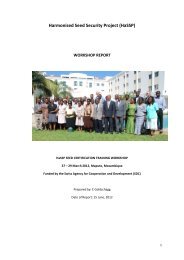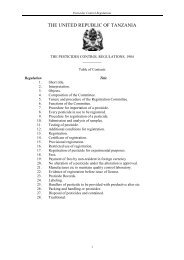Community-driven development decision tools for rural - IFAD
Community-driven development decision tools for rural - IFAD
Community-driven development decision tools for rural - IFAD
- No tags were found...
You also want an ePaper? Increase the reach of your titles
YUMPU automatically turns print PDFs into web optimized ePapers that Google loves.
Financing projects through CSOs of public utilityThe option of funding community subprojects through a CSO <strong>for</strong>mally recognized bygovernment as being “of public utility” has been successfully tested by <strong>IFAD</strong> in some CDDprojects in WCA. In this option, the long-term sustainability of the CSOs rests on theirdynamism and capacity to mobilize resources from the communities and privatephilanthropic organizations beyond the initial transfer ofpublic funds. This point is made clear to CSOs from the verybeginning, which is an important advantage of this option. Box 36This practice helps moderate the risk of the CSOs developing Transfer dependency“transfer (aid) dependency”, a widespread disease among local Transfer dependency is thegovernment administrations. A definition of transferattitude of local governmentsdependency is provided in Box 36.to expect that centralgovernments will pay <strong>for</strong>To fund public utility CSOs in an orderly manner, rathereverything and thethan as an ad hoc arrangement during the implementation ofcorresponding belief of localan externally financed project, a country must enactpoliticians that the way to getappropriate legislation to license qualified CSOs and tomore resources is to lobby<strong>for</strong>mally introduce instruments to transfer public funds tomore effectively at the centralthem. The legislation must specifyadministration.• the conditions that a private, non-profit organizationTo reduce the transfermust meet to be recognized as being “of public utility”; dependency effect,devolution policies insist on• the <strong>for</strong>m of the instruments that the government islocal governments raising aauthorized to use to transfer public funds to theseshare of their budget locally.organizations;In the absence of simple and• the criteria that the organizations are expected to apply intransparent cost-sharing andusing the public funds, including the general principles regional allocation criteria,that must be followed regarding procurement andthe advantages ofpayment of suppliers.decentralization are wipedout and the political gamethat predominates inBox 37 summarizes the main features of these instruments.centralized governments isoften quickly re-established.Box 37Financial instruments to transfer fundsto CSOsInstruments of fiscal decentralization can bedesigned to transfer public funds to CSOs ofpublic utility. These instruments are differentfrom the contracts used in the case ofdelegation. They incorporate the threefeatures mentioned in Box 34: transparency,predictability and autonomy. Also• they indicate the reasons and objectives<strong>for</strong> the partnership between the CSO andthe government and the strategy that theCSO commits to adopt to achieve thecommon objectives;• they commit funds <strong>for</strong> a reasonable periodof time (e.g. two or three years) <strong>for</strong> a<strong>development</strong> plan submitted by the CSOand subject to the CSO maintaining a goodrecord with respect to agreed indicators ofper<strong>for</strong>mance and financial discipline (e.g.accounting, reporting and audit);• funds are released on an annual basis,preferably in successive lump sums,avoiding any links between disbursementand specific projects because that mayaffect the CSOs’ autonomy in allocatingfunds among different activities andresponding to their members’ demands.It would also further complicatebureaucratic procedures <strong>for</strong> budgetapproval and fund disbursement.75



